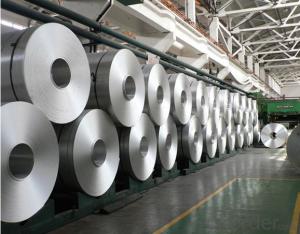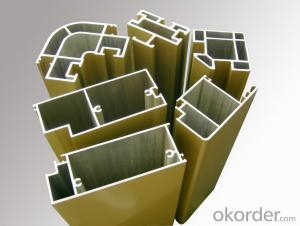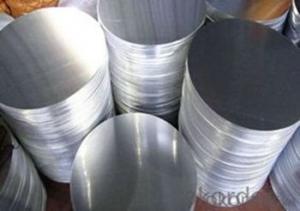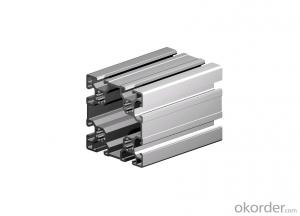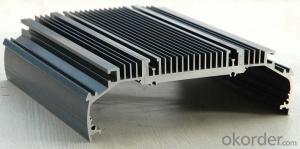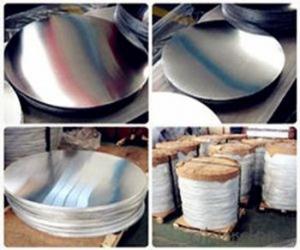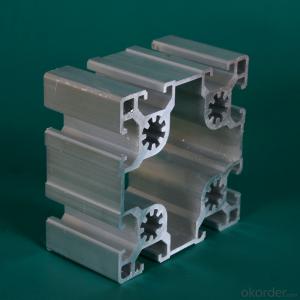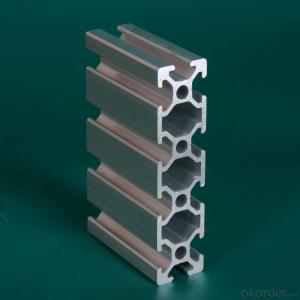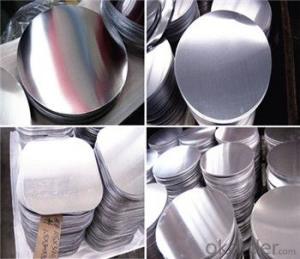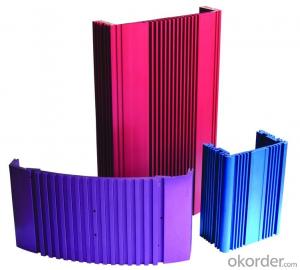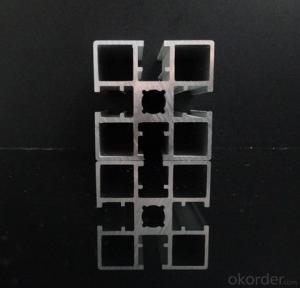Aluminum Extrusion Shapes Stock
Aluminum Extrusion Shapes Stock Related Searches
Led Light Bulbs For Ceiling Fixtures Led Lamps For Ceiling 42 In Ceiling Fan With Light Aluminum Coil Stock For Gutters Aluminum Foil For The Grill Hole Saw For Aluminum Plate Aluminum Tread Plate For Trailer Bow Plate For Aluminum Boat Aluminum Foil For Grow Room Aluminum Foil For Joint PainHot Searches
Stock Price For Aluminum Aluminum Coil Stock For Sale Aluminum Gutter Coil For Sale Used Aluminum Scaffolding For Sale 1/4 Aluminum Plate For Sale Aluminum Bar Stock For Sale Aluminum Round Stock For Sale Aluminum Diamond Plate For Sale Aluminum Scaffolding For Sale Craigslist 6061 Aluminum Plate For Sale Aluminum Dock Plate For Sale 7075 Aluminum Plate For Sale Aluminum Tread Plate For Sale Aluminum Checker Plate For Sale Aluminum Plate For Sale Near Me Plate Aluminum For Sale Aluminum Plate For Sale Aluminum Square Stock For Sale Aluminum Flat Stock For Sale Billet Aluminum Stock For SaleAluminum Extrusion Shapes Stock Supplier & Manufacturer from China
Okorder.com is a professional Aluminum Extrusion Shapes Stock supplier & manufacturer, offers integrated one-stop services including real-time quoting and online cargo tracking. We are funded by CNBM Group, a Fortune 500 enterprise and the largest Aluminum Extrusion Shapes Stock firm in China.Hot Products
FAQ
- Depending on the specific requirements and desired outcome, there are various cutting methods available for aluminum profiles. Some of the most commonly used cutting methods for aluminum profiles are as follows: 1. Saw cutting: By using a saw blade, the aluminum profile can be cut. This method is versatile and widely employed, offering high precision and producing straight cuts. Saw cutting is suitable for both small and large-scale production. 2. Shearing: This method involves the use of a guillotine-like tool to cut through the aluminum profile. Shearing is a quick and efficient method for cutting straight lines in aluminum profiles of different thicknesses. However, it may not be suitable for cutting complex shapes or angles. 3. CNC machining: Computer numerical control (CNC) machining is a highly precise cutting method that utilizes computer-controlled machines to cut aluminum profiles. It provides a wide range of cutting options, including complex shapes, angles, and contours. CNC machining is ideal for custom or intricate designs, but it may be more time-consuming and costly compared to other methods. 4. Laser cutting: Laser cutting utilizes a high-powered laser beam to cut through the aluminum profile. It is a precise and efficient method that can produce intricate and detailed cuts with minimal heat distortion. Laser cutting is highly suitable for thin aluminum profiles and is commonly used in industries such as aerospace and automotive. 5. Waterjet cutting: Waterjet cutting involves the use of a high-pressure stream of water mixed with an abrasive material to cut through the aluminum profile. It is a versatile method that can cut through various thicknesses and materials, including aluminum. Waterjet cutting is ideal for cutting complex shapes and has minimal heat-affected zones. 6. Plasma cutting: Plasma cutting utilizes a plasma torch to cut through the aluminum profile. It is a fast and efficient method that can handle thicker aluminum profiles. However, the heat generated during plasma cutting can cause distortion and may require additional post-cutting processes. In conclusion, the selection of a cutting method for aluminum profiles depends on factors such as desired cut quality, complexity of the design, production volume, and budget. Considering these factors is essential in choosing the most suitable cutting method for a specific application.
- Yes, aluminum profiles are suitable for use in transportation vehicle bodies. Aluminum is lightweight, corrosion-resistant, and durable, making it an ideal material for reducing vehicle weight and improving fuel efficiency. Additionally, aluminum profiles can be easily shaped and formed to meet specific design requirements, offering versatility in vehicle manufacturing.
- Aluminum profile connecting piece
- Very little to buy this alone, and only with industrial aluminum suppliers. - selling on Taobao is also a way if the price is appropriate.
- Are aluminum profiles painted by powder or by fluorocarbon spray? How can they be distinguished from appearance?
- The surface treatment of the curtain wall aluminum plate is solved by electrostatic spraying, not only the color difference becomes smaller, but also the aluminum plate with various colors can be obtained. Electrostatic spraying can be divided into powder spraying and fluorocarbon spraying. The raw materials of powder spraying are polyurethane, polyurethane resin, epoxy resin, hydroxyl polyester resin and epoxy / polyester resin, which can be made into many colors. The characteristics of powder spraying: spraying equipment manual, automatic hanging type, simple construction, the thickness of the coating is 30 micron, impact resistance, abrasion resistance, corrosion resistance, weather resistance are good, the price cheaper than fluorocarbon coatings.
- Aluminum profiles contribute to water management strategies by being used in the construction of water tanks, pipes, and fittings. These profiles have excellent corrosion resistance and durability, making them ideal for storing and transporting water. Additionally, their lightweight nature allows for easy installation and maintenance. Overall, aluminum profiles play a crucial role in ensuring efficient water management systems by providing reliable and long-lasting infrastructure.
- There are several different types of anodizing options available for aluminum profiles, each with its own unique benefits and characteristics. Some of the most common types of anodizing include: 1. Type I - Chromic Acid Anodizing: This is a thin and non-decorative anodizing process that provides excellent corrosion resistance. It is often used as a primer for paints or adhesives. 2. Type II - Sulfuric Acid Anodizing: This is the most commonly used anodizing process, which produces a thicker and more durable oxide layer. It can be further classified into two subtypes: regular sulfuric anodizing and hardcoat anodizing. Regular sulfuric anodizing provides good corrosion resistance and can be dyed in various colors for aesthetic purposes. Hardcoat anodizing, on the other hand, produces a very hard and wear-resistant surface, making it suitable for applications with high abrasion or wear. 3. Type III - Sulfuric Acid Hardcoat Anodizing: Also known as hard anodizing, it is a specialized process that produces an even thicker and denser oxide layer than regular sulfuric anodizing. This results in enhanced wear and corrosion resistance, making it ideal for applications in harsh environments. 4. Type IV - Boric-Sulfuric Acid Anodizing: This is a relatively new anodizing process that combines sulfuric acid anodizing with a boric acid bath. It produces a thin and hard oxide layer with improved wear resistance and reduced electrical conductivity. 5. Type V - Phosphoric Acid Anodizing: This type of anodizing is typically used for specific applications where a thin, dense, and hard oxide layer is required. It offers good corrosion resistance and can be dyed for aesthetic purposes. These different types of anodizing options for aluminum profiles allow for a range of properties and appearances, making them suitable for various applications such as architectural, automotive, aerospace, electronics, and more. The choice of the anodizing type depends on the specific requirements and desired outcome of the aluminum profile.
- the middle of the following is a groove structure, as if you can not bolt hole, then how to install the rail on it? What's the use of flat sealing strips and slip bars embedded inside? Is it necessary to mount the guide rail on the aluminum profile, you can choose more than 6060 of the profiles, the middle is flat structure, and then drill holes in the bolt connection rail Thanks
- A longitudinal groove or ridge on the surface of a guide, used for guiding and fixing machine parts, special equipment, instruments, etc.. The guide rail, also known as linear guide, linear slide rail, for linear reciprocating movement, linear bearings have higher than the rated load, and can bear a certain torque, can achieve high precision linear motion under high load. The main rail is divided into two major categories: roller guides and ball bearings.
- Marine vessel manufacturing can indeed utilize aluminum profiles. Boats and other marine vessels are commonly constructed using aluminum due to its exceptional characteristics. Lightweight, durable, and resistant to corrosion, aluminum proves to be an ideal material for marine environments. It can endure the effects of saltwater exposure, a prevalent concern in marine applications. Moreover, aluminum profiles can be effortlessly shaped, welded, and interconnected, facilitating efficient and customizable vessel designs. This adaptability renders aluminum highly appealing to boat builders and manufacturers.



























